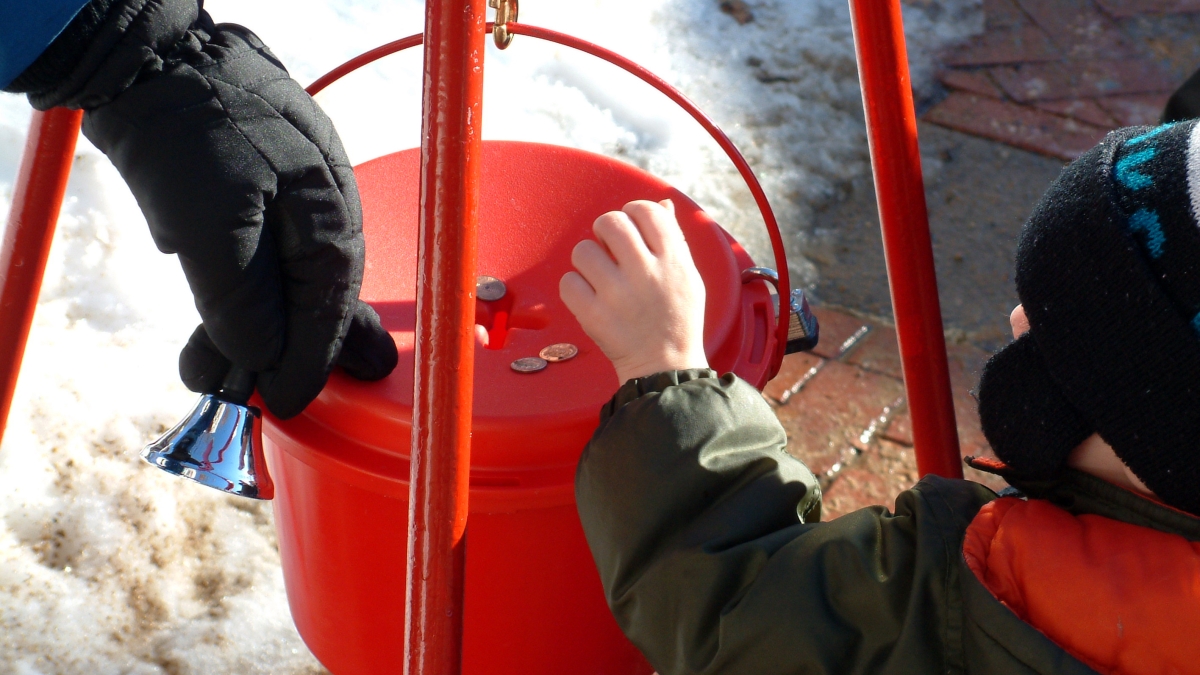One place you’re sure to hear bells ringing during the holidays is the entrance to a retail store, where chipper volunteers stand eagerly swinging their silver chimes and imploring you for alms.
And because it is the season of giving, after all, most of us will reach into our pockets and share what we can without a second thought.
This year, ASU News took a moment to pause and ask why. That is, why do we give so freely during the holidays? And what is the motivation behind it, anyway?
President’s Professor of psychology Douglas Kenrick co-directs the Kenrick-Neuberg Social Cognition Laboratory, where his research has probed the effects of fundamental social motivations on basic cognitive processes. Below, he shares some insights about the holidays and their inextricable link to the act of giving.
Editor’s note: Reponses have been lightly edited for length and clarity.
Douglas Kenrick
Question: Why does it feel good to give?
Answer: Some behavioral researchers have argued that we are naturally selected to be charitable because our ancestors survived by cooperating. ASU anthropologists Kim Hill and Magdalena Hurtado have found that people living in traditional small groups in the South American jungles need to share food in order to survive inevitable inconsistencies in food supplies from hunting and gathering. Other anthropologists have noted that most people in such traditional groups have times when they cannot provide for themselves — when recovering from injuries, or when providing for a small child, for example. On this view, we are designed to be kind to others in need.
What I do know from research is that the premise that it feels good to give seems to be true. My favorite study about this was done by UBC psychologist Liz Dunn and her colleagues. They gave people some money and instructed them either to spend it on themselves or on someone else. Those who spent the money on other people were happier the next day, but spending on yourself did nothing for your mood.
My colleague Robert Cialdini did a number of studies indicating that people are more likely to give when they are in a sad mood, and that the giving makes them feel better. He explained it in terms of learning to associate giving with getting praise from others. Small children do not give when they are feeling sad, but the sadness-giving link increases with age.
Q: It seems that people are more charitable during the holidays, in particular. Do you have any insights as to why that may be?
A: A quick look online revealed a graph (the second graph on the page, titled “Charitable site ‘donate now’ click growth: 2014”) that would seem to support that thinking. The graph comes from an investment website, and they attribute the big bump on New Year’s Eve to a desire to contribute while there is still a tax deduction for that year. However, there are also a couple of bumps in December, including on Christmas Eve. I am not sure what kinds of contributions they are measuring here, incidentally.
Assuming those bumps are real, though, I don’t know the answer to your question. One possibility is that people are giving to make themselves feel better in the gloomy months, but this graph doesn’t show January, so if that were true, that peak would continue into January and February. The Christmas Eve peak may come from the fact that people are primed to think about giving gifts because of the norm about Christmas, and if we become aware of other people with real needs, like the person begging in the parking lot, we give. But I don’t really have an educated opinion on that part.
Q: Are there other motivations – aside from altruism – behind why we give?
A: Yes. There is research, some done by Vlad Griskevicius (now a professor of business at the University of Minnesota, but a one-time ASU psychology PhD who worked with Cialdini) that people often give to show off their resources or their nurturance, which can make them more attractive as marriage partners.
Q: Can an individual’s societal status predict their likelihood to be charitable?
A: Research by Griskevicius and by Mark van Vugt of Amsterdam’s Free University suggests that giving is a way to enhance your status, and to advertise it.
Q: Is there such a thing as selfless giving?
A: People certainly give to help others in countries halfway around the world, from whom they gain nothing. It may make us feel good, which a philosopher could argue is “selfish” in a narrow sense, but if there’s a built-in tendency to feel good when we help, that is sufficient to make us charitable in ways that are selfless enough.
Top photo courtesy of iStock/Getty Images
More Science and technology

ASU professor wins NIH Director’s New Innovator Award for research linking gene function to brain structure
Life experiences alter us in many ways, including how we act and our mental and physical health. What we go through can even change how our genes work, how the instructions coded into our DNA are…

ASU postdoctoral researcher leads initiative to support graduate student mental health
Olivia Davis had firsthand experience with anxiety and OCD before she entered grad school. Then, during the pandemic and as a result of the growing pressures of the graduate school environment, she…

ASU graduate student researching interplay between family dynamics, ADHD
The symptoms of attention deficit hyperactivity disorder (ADHD) — which include daydreaming, making careless mistakes or taking risks, having a hard time resisting temptation, difficulty getting…

